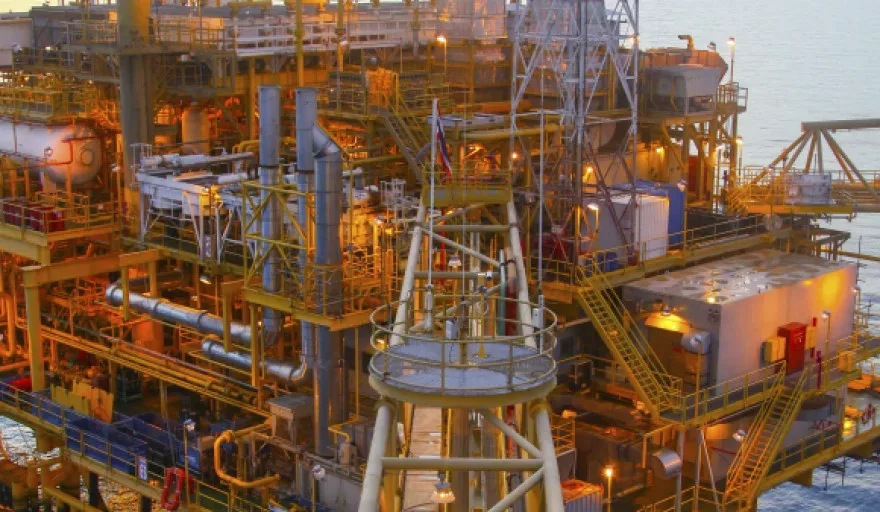Oil & gas companies, grappling with an intense battle for customers amid a supply glut and stressed prices, are increasingly looking for ways to improve efficiency and reliability of their assets to gain a competitive edge. One area of rising investment is in the confluence of technology that allows greater communication and integration of different devices and sensors, the so-called Internet of Things(IOT), a promising disruptor that can allow producers to keep wells flowing and refineries running at a pace that wasn’t possible only a few years ago.
Ghassan Barghouth, VP Middle East, Oil & Gas and Industrial Segments at Schneider Electric, says that oil & gas companies are becoming increasingly aware of the benefits IoT can bring, and are capitalising on the trend.
Q&A WITH GHASSAN BARGHOUTH
What value is there for oil & gas companies in implementing an IoT strategy?
Ghassan Barghouth (GB): IoT has captured the imagination of consumer-device manufacturers, from refrigerators that can automatically restock favourite foods to cars that communicate with other vehicles and road infrastructure. Lower costs of sensors and the ability to transfer and process growing amounts of data is enabling the shift to greater connectivity for both consumer and industrial applications. In the oil & gas sector, a critical industry that’s generally resistant to chasing the latest fads, the adoption has been explosive.
Machines have been talking to each other for decades. With the Internet of Things, humans are included in this conversation, transforming physical assets into digital ones that constantly monitor their surroundings and communicate to humans, making our machines more alive. By funnelling this data into the cloud rather than segregated, closed systems, people are able to interpret insights and trends on how machines are behaving, and benchmark them against other assets which helps make better decisions.
The value that can be generated in the oil & gas industry by implementing an integrated IoT strategy is considerable. According to a recent Deloitte study, decision-makers in the industry have access to just one percent of the data gathered from assets. Improving data capture and analysis can cut unplanned well outages by 50 percent and increase crude output by as much as 10 percent over a two-year period.
This potential for rising production from existing assets comes as international and national oil companies retrench from investing in new technologies after crude prices plunged over the past year.
And it’s precisely during such a period, when planned projects are shelved and workers are let go, that low-cost oil producers in the Gulf Cooperation Council should exploit favourable pricing from service providers and make investments that will give them an edge when prices rise.
Where will the industry be in terms of utilising this technology in the next two to five years?
GB: The market cannot afford to wait much longer to adopt IoT, especially as lower oil prices eat into budgets and rising energy demand comes as many reservoirs in the region become increasingly challenging. The pressure is building on energy producers and IoT, and other innovative technologies represent a much-needed relief valve. There is no way of determining when a majority adoption will happen – there are too many factors that affect companies’ budgets and schedules – but I would expect it to be medium-term, so in two to five years. Energy companies can simply no longer afford to ignore the beneficial impact that IoT and other innovative technologies can have on their balance sheets.
Companies are rushing to create cloud services that connect and integrate wells with other equipment in an effort to optimise energy consumption, increase reliability, and allow for condition-based maintenance that helps producers maximise returns and maintain continuous output. End-users are digitising their physical assets. This is happening as a result of the growing number of devices with cellular or satellite connectivity deployed in oil & gas applications around the world, which was 423,000 at the end of 2013, according to Berg insight, an analyst firm focused on the machine-to-machine market. Berg estimates that number will rise by 21.4 percent per annum, reaching 1.12 million by 2018.
How can adopting IoT help to grow oil & gas markets in the Middle East?
GB: The advantages are clear; IoT helps to cut operational costs and increase efficiency. It also enables oil & gas workers to avoid sometimes hazardous environments, as the technology can be exposed to that risk instead. All of these benefits are particularly relevant in the Gulf’s huge energy industry, especially as budgets are squeezed by lower oil prices. The downside is making the time and effort to integrate a new method of working into a very traditional industry that has seen relatively little change over several decades. This requires a mind shift, training and of course, initial investment into research and development (R&D) and the cost of the technology itself.
According to RnR Market Research, the region is also poised to be the world’s fastest-growing digital oilfield market, with spending to rise at a compound annual growth rate of 5.9 percent to 2022. This compares with 4.8 percent for the global market during the same period.
When do you expect to see IoT take-off in the oil & gas industry globally, and to what scale?
GB: The industry is witnessing a convergence between the Information Technology (IT) and Operational Technology (OT). Application of IoT in the oil & gas industry is not a country related decision but rather depends on the leadership and vision of decision-makers in the industry.
Taking the example of the Gulf, an established energy and IT hub with vast and growing operations, the application of IoT can be never-ending. This should also be combined with a perspective of cross-over technologies, where, for example, we see opportunities for weather cloud services in offshore operations and real-time energy trading software with refinery terminal operations.
Innovations that trim costs and boost operational efficiency only come about because of leadership vision, collaboration between different industries, and having the guts to do things differently. Innovation is no longer about creating a light bulb, we are past that stage.
Innovation is about creating a new application of technologies that currently exist; let’s invest time and money today into an idea that may flourish in a decade’s time. IOT will develop a trend within the industry to create a “self healing” or a “self optimising” plant. Equipment and systems will be creating the necessary workflows based on process simulation to heal abnormalities.
What does the future hold for the deployment of value-add technologies in the oil & gas industry?
GB: Technology may advance incrementally on the margins for long periods of time without substantially affecting established players. Indeed, developing technologies may remain uneconomical on average, even as leading innovators approach breakthroughs. The future will see an increase in mergers, acquisitions, and the emergence of IOT (IT/Industrial) hybrid companies collaborating to bring affordable and efficient innovation to the market. But once a technology delivers cost and performance that is materially superior to the status quo; it may well be adopted rapidly en masse.
To read the full article in our latest edition, click here.



















